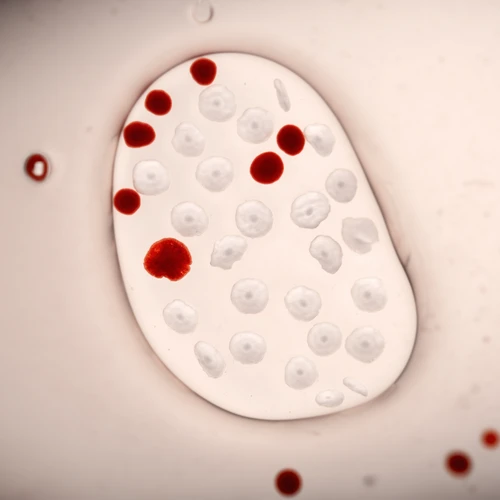Once believed to be inactive in blood clotting, red blood cells are now found to play an active part in the shrinking of blood clots according to a new study from the University of Pennsylvania.
"This discovery alters our understanding of this fundamental bodily process," says Rustem Litvinov, senior researcher at the Perelman School of Medicine (PSOM) and co-author of the study. "It also paves the way for new approaches in studying and potentially treating clotting disorders that can lead to excessive bleeding or dangerous blood clots, like those seen in strokes."
The finding, published in Blood Advances, contradicts the long-held belief that only platelets drive clot contraction. Instead, the Penn researchers discovered that red blood cells themselves contribute significantly to this process of reducing and stabilizing blood clots.
Blood Advances"Red blood cells have been studied since the 17th century," notes co-author Prashant Purohit, Professor of Mechanical Engineering and Applied Mechanics within Penn Engineering. "The surprising fact is that we're still discovering new things about them in the 21st century."
Until now researchers assumed only platelets were responsible for clot contraction. These tiny fragments pull on protein fibrin strands to tighten and stabilize clots.
"Red blood cells were thought to be passive bystanders," says co-author John Weisel, Professor of Cell and Developmental Biology within PSOM and an affiliate of the Bioengineering graduate group within Penn Engineering. "We believed they merely helped form a better seal."
That assumption was questioned when Weisel and Litvinov conducted a test where blood clots without platelets still shrank by more than 20%. They repeated this experiment with chemicals blocking platelet activity, and the clots continued to contract.
"We realized red blood cells must be doing more than just taking up space," says Litvinov.
To understand how red blood cells were driving this unexpected behavior, they consulted mechanical engineer Prashant Purohit. Using a mathematical model, he suggested that osmotic depletion—a process similar to particles gathering in colloids—causes red blood cell compaction when conditions change around them.
"Proteins in the surrounding fluid create an imbalance of pressure, pushing red blood cells together," explains Purohit. "This force causes tighter packing, helping clots contract even without platelets."
As blood clots form, a fibrin mesh traps red blood cells. This sets off osmotic depletion forces that compact them further.
"Higher protein concentration outside than inside the cells creates an 'osmotic pressure' difference," says Purohit. "This acts like a squeeze, pushing cells closer together."
That attraction aggregates cells and transfers mechanical forces to the fibrin network, adding strength to the clot even without platelets.
Prior research suggested bridging might explain this phenomenon, where small molecules on red blood cell surfaces cause adhesion.
"Our model showed this effect is real but smaller than osmotic depletion," Purohit says. To validate their theory, Alina Peshkova performed experiments on modified clots with chemicals to block either osmotic or bridging effects, confirming that osmotic forces drove the contraction.
Understanding red blood cell roles in clot formation could lead to new treatments for conditions like thrombocytopenia, or help clarify how clots cause embolisms leading to strokes.
"Ultimately, our model will aid in preventing and managing diseases related to clotting," concludes Purohit. Additional co-authors include Ekaterina K. Rednikova, Rafael R. Khismatullin, Vladimir R. Muzykantov of PSOM, and Oleg V. Kim of PSOM and Virginia Tech.


